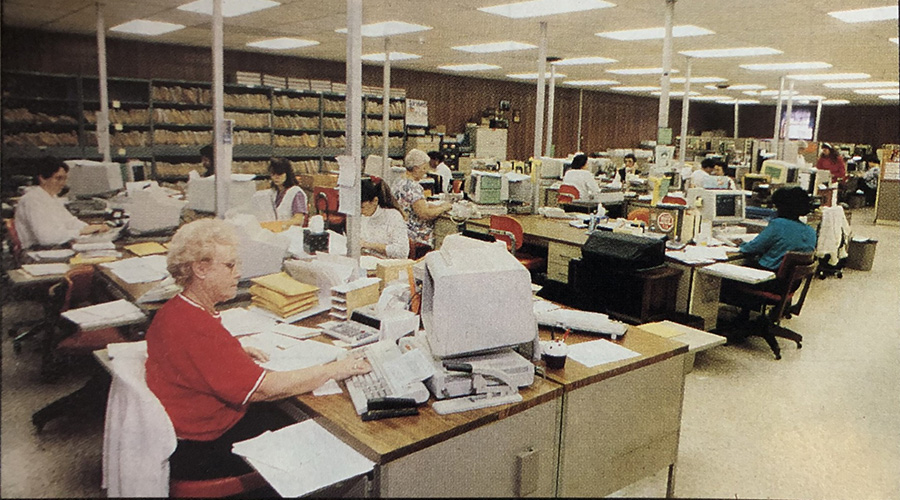Outlook
Crunching the numbers: The devil is in the details
Five funding proposals hit the CFOs desk on the same day. Each proposal — labeled A through E — is requesting the same investment amount. All have the same level of risk and the same 10-year investment horizon. Here are the total net benefits (cumulative benefits minus the initial investment) at the end of 10 years for the five proposals:
A. $1,331,250
B. $2,385,143
C. $2,586,249
D. $2,611,499
E. $2,668,032
The clear-cut winner is proposal E because it offers the maximum total net benefit. Surprisingly, that doesn’t mean the project described in proposal E will help the corporate bottom line more than the one described in proposal A. In fact, despite the $1.3 million spread between proposals A and E, all five proposals are based on the same lighting upgrade project. The difference between the proposals isn’t in the project work to be done or the assumptions about the savings that would result; those are identical in each proposal. The difference is that each proposal uses a different set of second-tier financial assumptions in its analysis.
At the most basic level, the goal of financial analysis is to identify a solution that, when all things are equal, will yield the largest financial reward for the same dollars invested. A lack of consistency in the way financial analyses are carried out — a common problem — can cause difficulty within an organization because it can distort the allocation of funds.
Even financially sophisticated managers — facility executives and others outside the accounting department — sometimes miss nuances in financial analysis that can have a significant impact on whether a project is ultimately approved. One example is the extent to which minor details can have an enormous effect on a financial analysis. Another important but sometimes overlooked point is the value of measuring the financial impact of delaying a project until the next budget cycle.
Taking a closer look
A close look at each of the proposals reveals how assumptions in a financial analysis can account for a $1,336,782 spread from top to bottom.
Proposal A: This financial analysis is basic, almost crude. Invest $443,750; save $177,500 each year for 10 years for a total of $1,775,000. Subtracting the initial investment yields a total net benefit of $1,331,250.
Proposal B: This analysis considers what happens to the funds created by the energy savings. It assumes that the money saved is going to be reinvested somewhere by the organization. Typically organizations use a “hurdle rate,” a minimum required rate of return, above which the investment makes sense and below which it does not. This organization uses a hurdle rate of 10 percent. Because this money would not be available for reinvestment without this project, giving the project credit for the investment income is reasonable.
The analysis assumes the $177,500 in annual savings is invested at 10 percent interest each year. At the end of 10 years, the funds will have grown to $2,828,893; subtract the initial investment of $443,750, and the total net benefit is $2,385,143.
Proposal C: This analysis is similar to proposal B with one exception. Because utility bills are paid monthly rather than in a single annual payment, the number of periods within the 10-year time horizon is increased from 10 to 120 to reflect the monthly utility billing cycle. Doing so results in a total benefit of $3,029,999; taking away the initial investment leaves a total net benefit of $2,586,249.
Proposal D: This analysis shares many of the same assumptions as proposal C, but one minor detail moves it ahead of that proposal. For years, spreadsheet programs used “end of period” as the built-in default for calculating present value or future value. In simple terms, this means that if there was a 10-year time horizon, with 120 periods, the spreadsheet function would assume that the income or expense occurred on the last day of each month. On the other hand, using the “beginning of the period” convention, the spreadsheet function assumes the income or expense occurs on the first day of the month.
Newer versions of programs like Excel allow for choosing either “end of period” or “beginning of period.” In proposal D, the money was put to work as soon as possible, so “beginning of period” was selected. This yields a total benefit of $3,055,249; subtracting the initial investment yields a total net benefit of $2,611,499.
Proposal E: This proposal combines some of the assumptions of proposals B and D. Like proposal B, it assumes the $177,500 in annual savings is invested as a lump sum at ten percent per year. From proposal D, the analysis uses the “beginning of period” convention, which means the $177,500 of energy savings is invested on Jan. 1 rather than Dec. 31 of each year. The logic behind this assumption is that the savings created by the proposal would have been budgeted as energy costs, therefore those funds can now be budgeted as an investment. The result: a total benefit of $3,111,782, less the initial investment of $443,750, for a total net benefit of $2,668,032.
As this exercise makes clear, little details can have a big impact on a financial analysis. In a very large organization, proposal E may be appropriate. For smaller organizations, having the funds provided by the energy savings available as a lump sum on Jan. 1 of each year may be beyond the organization’s cash flow. This is why organizations in their annual budget cycle should standardize their assumptions for all financial analyses to be done during the following year. Some of the assumptions that could be standardized include:
- Investment horizon: the length of time covered by the analysis. Typical time horizons are 10, 20 and 30 years. A common problem is using too short of an investment horizon; consider a horizon that allows for a minimum of one product replacement cycle.
- Number of periods: frequency of the analysis either monthly or annually. For energy savings projects, consider a monthly basis because it is consistent with the utility billing cycle. While the analysis may be done on a monthly basis, consolidate the results into an annual format when presenting to management.
- Hurdle rate: the minimum required rate of return, above which the investment makes sense and below which it does not. Often used for go or no-go decisions.
- Discount rate: the interest rate used to discount future cash flows to a present value.
- Reinvestment rate: the interest rate that all intermediate cash flows will be reinvested at during the analysis. This rate can be higher than the discount rate. Very often it is equal to the hurdle rate.
- Safe rate: the interest rate used to discount future negative cash flows so the amount set aside in the present could increase in value to the amount needed for a future cash outlay. The safe rate is comparable to the yield on a savings account. The key points are safety of principal and the stability of the interest with the ability to make any size investment, however small.
- Depreciation: deductible non-cash expense used to recover the cost of an investment over its useful life. Funds provided by the depreciation deduction can be invested until needed for the replacement of the item or other purposes. Real property is depreciated on a 39-year schedule; personal property is depreciated over 7 years.
- Before-tax or after-tax basis: Taxes are important considerations since all funding comes from after-tax dollars. Many facility executives do not consider the impact of tax rate and depreciation in their financial analysis. Failure to do so can lead to poor decisions.
- Tax rate: the percent of income paid as taxes. It includes all federal, state and local income taxes.
When Opportunity Knocks
“There’s no money in the budget; it’ll have to wait until next year.” Every facility executive has heard that phrase. Delaying the approval and implementation of the lighting upgrade described in this article until next year’s budget cycle would have had a negative effect on the net benefit.
By waiting a year, the $177,500 in energy savings from year one is lost forever. The interest on that $177,500 for the entire investment horizon is lost too. This is called an opportunity cost. That’s the value of the next best purpose the money could have been used for.
However, to be rigorous, the financial aspect of waiting one year before starting the project must also be analyzed. Assuming that the $443,750 needed for the project was put to work someplace, and it was invested at the 10-percent per year hurdle rate, it would have earned $44,375 during year one. While a lower “safe rate” would have been more appropriate, in this case using the higher “hurdle rate” keeps things simple.
Was waiting till the next budget cycle a good decision? No. The lighting upgrade provides a 40 percent return on investment ($177,500/$443,750), which is four times the return on investment on the $443,750 invested at the hurdle rate. Even if the money to pay for this project cannot be internally generated, it makes economic sense to borrow the money, given the 40 percent ROI and the dependability of the cash flow. Clearly, time is money.
B. Alan Whitson, RPA, is president of Corporate Realty, Design & Management Institute.
Copyright 2005 B. Alan Whitson
Related Topics:











